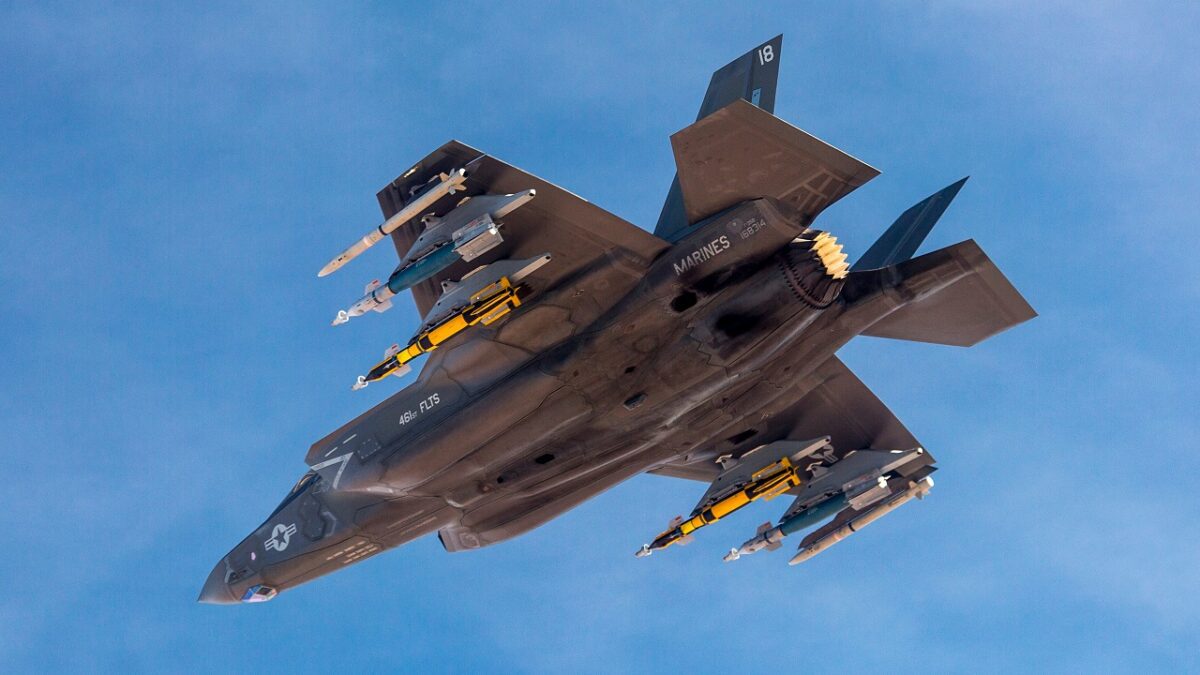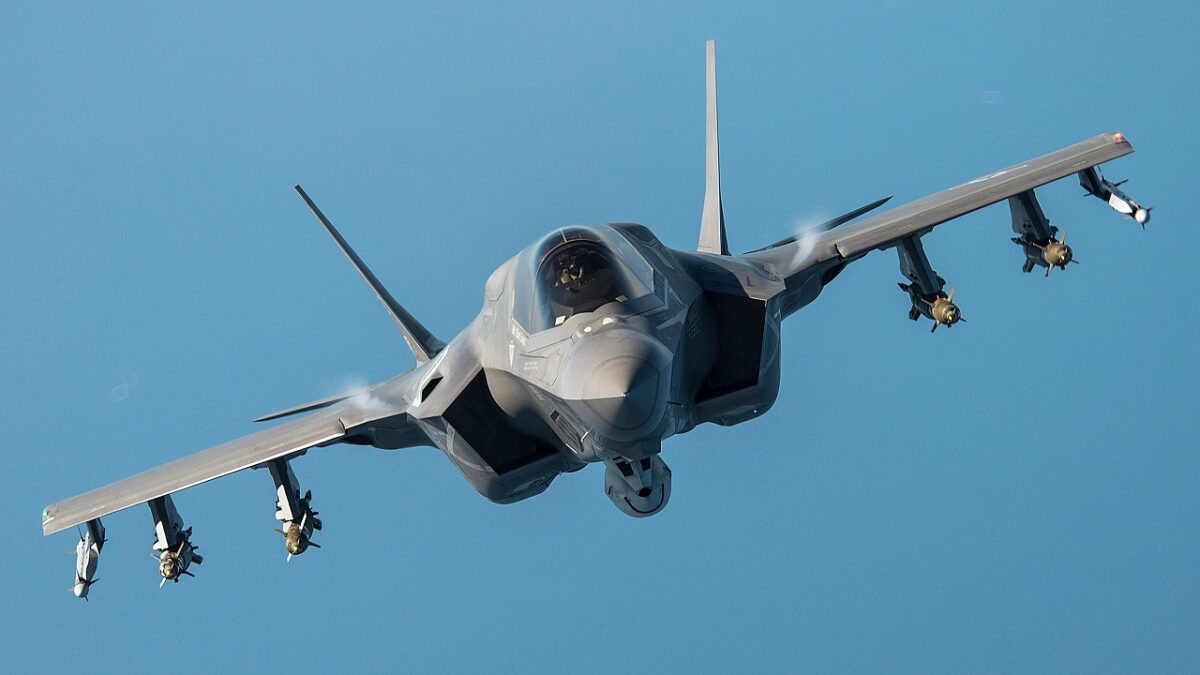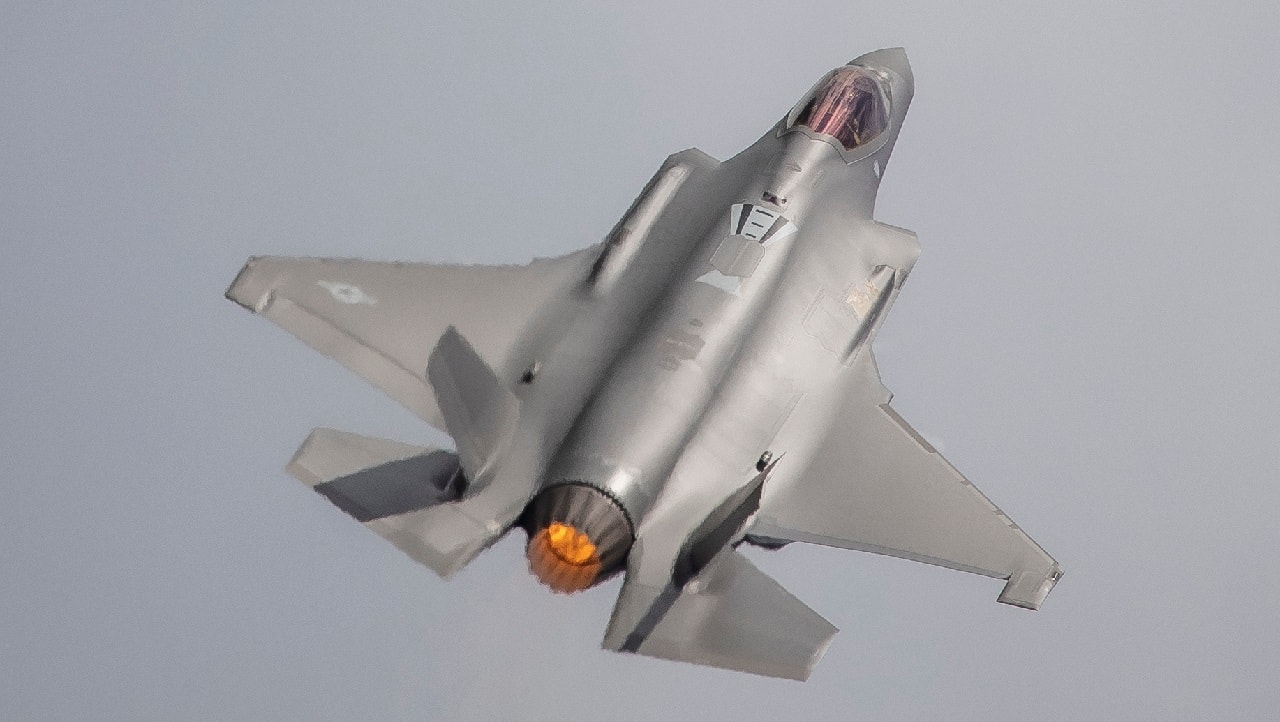Lockheed Martin Flying High After Latest F-35 Order Russia’s invasion of Ukraine and China’s threats against Taiwan mean nations that are fearful of what Moscow and Beijing could do next are clearly thinking about what their air force needs to look like in the years to come. Many are making the jump to stealth – and that can mean only one thing: considering a purchase of the F-35.

F-35 stealth fighter. Image Credit: Creative Commons.
America Keeps Buying More F-35s
The F-35 Lightning II is the most capable multirole fighter aircraft in service anywhere in the world today, and the aircraft has certainly done very well for its maker, Lockheed Martin Corp. The company’s business segment, Aeronautics, recently signed a modification contract that was provided by Naval Air System Command, Patuxent River, Maryland.
Valued at $7.63 billion, Lockheed Martin (LMT) will produce a total of 129 F-35 aircraft – from all variations – while also providing 69 shipsets of technical hardware. The contract will serve the U.S. Air Force, U.S. Navy, U.S. Marine Corps, non-U.S Department of Defense (DoD) participants, as well as Foreign Military Sales customers.
According to the Pentagon, 49 of the F-35As will be delivered to the Air Force, while three F-35Bs and 10 F-35Cs will be received by the Marine Corps. Fifteen of the contracted F-35s are for the U.S. Navy, while 32 F-35As and four F-35Bs will be delivered to non-DoD participants. The remaining 16 F-35s will go to U.S. allies under Foreign Military Sales.
A major portion of the agreement will be executed in Fort Worth, Texas; whilst additional work will be completed in California and the UK.
LMT Flying High
The aerospace and defense giant, which is currently the largest DoD contractor, now maintains a dominant position in the global military aircraft space with its F-35 fleet. The fifth-generation stealth aircraft boasts features that make it an ideal choice for many nations. Moreover, Lockheed Martin is able to ensure constant efforts to modernize and upgrade the aircraft with advanced technologies and further enhance the fighter’s unique capabilities to meet the current warfare needs, which could boost demand significantly.
The F-35 program remained the largest revenue generator for LMT’s Aeronautics business unit and accounted for 68 percent of Aeronautics’ net sales in 2021. To date, LMT has delivered 814 F-35 airplanes since the program’s inception, with 169 jets in backlog until June 2022. This, along with the latest contract win, will only serve to increase the sales expectation for the Aeronautics business segment.
Lockheed Martin currently expects to make deliveries of its stealth aircraft in the range of 147-153 jets per year in 2023 and 2024, and 156 thereafter in 2025 and beyond. That, in turn, should bolster LMT’s revenues significantly from the military aircraft arena, analysts at Zacks Equity Research reported.
Russia Invades Ukraine, More F-35s Headed to Europe
Last month, the Greek government sent an official request to the United States for the purchase of 20 F-35s. Athens now spends more than two percent of its gross domestic product (GDP) on defense spending, and the F-35 could be a key component of the nation’s defense measures – which have increased in years as tensions with its neighbor, historic rival, and NATO ally Turkey, have resurfaced.
Prime Minister Kyriakos Mitsotakis has stated that Greece is already examining the purchase of a second group of jets following its initial purchase.
“Our intention is to acquire an F-35 squadron with a possible option for a second one. Sending a Letter of Request (LoR) which has happened in the past few days is part of this process,” Mitsotakis told reporters after the NATO summit in July.
Greece is not the only European partner that has expressed interest in the stealthy jet. Earlier this month, the U.S. State Department approved a potential sale of over $8 billion worth of F-35 aircraft to Germany, moving closer to providing Berlin with new fighter aircraft for nuclear deterrence missions. On August 2, the State Department announced the foreign military sales (FMS) approval for up to 35 F-35A aircraft, along with munitions and related equipment.
The F-35A will take over, by 2030, the nuclear weapons mission from the German Air Force’s aging fleet of PA-200 Tornado aircraft, based at Tactical Air Wing 33 in Büchel, Germany.
Switzerland, the Czech Republic, and Finland have also all expressed a desire to operate the F-35. That should keep the assembly lines at Lockheed Martin moving along for years to come.

F-35 shot from KC-135 tanker.
What the Experts Think
“With the F-35 already sold to Australia and South Korea and a number of new European nations now considering the stealth fighter, it seems clear that Russia and China’s aggressive actions over the last few years may have not been cost-free,” explained a former U.S. Department of Defense official during the Obama Administration. “The F-35 might end up being the big winner as Moscow and Bejing attempt to change the status quo to their benefit. Of course, that plan could backfire, as different nations will upgrade their military capabilities in response – and that likely means a lot more F-35s in Asia and Europe over the decades to come.”
A Senior Editor for 1945, Peter Suciu is a Michigan-based writer who has contributed to more than four dozen magazines, newspapers, and websites with over 3,000 published pieces over a twenty-year career in journalism. He regularly writes about military hardware, firearms history, cybersecurity, and international affairs. Peter is also a Contributing Writer for Forbes. You can follow him on Twitter: @PeterSuciu.

